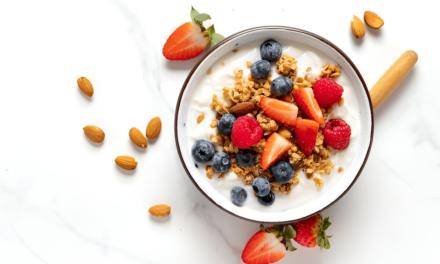Navigating healthy eating in today’s fast-paced world can be confusing. With diet trends constantly changing, it’s easy to lose sight of what truly matters. That’s where the Canada Food Guide comes in—offering science-backed advice to help Canadians of all ages make healthier choices.
In 2025, Health Canada continues to emphasize a simplified, sustainable, and inclusive approach to nutrition. This blog breaks down everything you need to know about the Canada Food Guide in 2025—including updates, portion ideas, meal planning, and solutions to everyday nutrition questions.
What Is the Canada Food Guide?
The Canada Food Guide is an official policy tool developed by Health Canada to promote healthy eating and overall wellness. It provides practical advice for individuals and families to make informed food decisions based on science.
Updated in 2019 and reaffirmed through 2025, the guide:
- Encourages eating plenty of vegetables and fruits
- Recommends choosing whole grains
- Highlights the importance of protein foods, especially plant-based proteins
- Suggests drinking water as the drink of choice
What’s New in the Canada Food Guide 2025?
The core principles from the 2019 version remain, but here’s what’s been emphasized for 2025:
✅ Greater Focus on Sustainability
- Choose locally sourced and plant-based foods more often
- Reduce food waste by planning meals and storing leftovers
✅ Inclusive Cultural Representation
- The guide acknowledges diverse diets in Canada, including Indigenous, South Asian, East Asian, and Mediterranean cuisines.
✅ Food Literacy and Mindful Eating
- Encourages cooking more often
- Suggests being mindful while eating—sitting down, avoiding screens, and eating with others
What Should Your Plate Look Like in 2025?
The “Eat Well Plate” remains the most recognizable symbol of the Canada Food Guide. Here’s how your plate should look at each meal:
- 🥦 50% Vegetables and Fruits
Packed with nutrients and fibre. Eat the rainbow—carrots, leafy greens, berries, peppers. - 🍞 25% Whole Grain Foods
Choose whole grains like brown rice, quinoa, and whole wheat pasta for lasting energy. - 🍗 25% Protein Foods
Incorporate beans, lentils, nuts, tofu, eggs, dairy, and lean meats. - 💧 Drink Water
Limit sugary drinks and choose water as your main beverage.
Daily Tips: How to Follow the Canada Food Guide
1. Plan Ahead
- Create weekly meal plans with balanced portions.
- Shop with a grocery list to avoid impulse buys.
2. Cook More Often
- Homemade meals reduce sodium, sugar, and unhealthy fats.
- Involve family members to make cooking fun.
3. Limit Ultra-Processed Foods
- Avoid sugary drinks, packaged snacks, and frozen meals.
- Read nutrition labels and choose items with fewer ingredients.
4. Eat Mindfully
- Listen to hunger cues.
- Avoid distractions while eating.
- Share meals with others whenever possible.
How the Guide Supports Different Lifestyles
Whether you’re vegetarian, vegan, gluten-free, or on a specific medical diet, the Canada Food Guide is flexible and inclusive.
For Vegetarians and Vegans:
- Opt for lentils, chickpeas, tofu, tempeh, nuts, and fortified plant milks.
For Children:
- Use the guide’s concepts, but adjust portion sizes.
- Focus on calcium, vitamin D, iron, and fibre-rich foods.
For Seniors:
- Focus on easy-to-chew, nutrient-dense foods.
- Stay hydrated and include calcium-rich items to support bone health.
Common Questions About the Canada Food Guide 2025
Q1: Is Meat Still Recommended?
A: Yes, but the guide encourages plant-based proteins more often due to health and environmental benefits.
Q2: What About Dairy?
A: Dairy remains a healthy option when unsweetened and low in fat. Fortified plant-based alternatives are also recommended.
Q3: Are Supplements Necessary?
A: Not typically, but vitamin D may be recommended, especially in winter months or for people with limited sun exposure.
Sample One-Day Meal Plan Based on the Guide
Breakfast:
Oatmeal with blueberries and almond butter + herbal tea
Snack:
Greek yogurt with sliced banana
Lunch:
Whole grain wrap with grilled veggies and hummus + water
Snack:
Carrot sticks and roasted chickpeas
Dinner:
Baked salmon, quinoa, and steamed broccoli + lemon water
Making the Canada Food Guide Work for You
The Canada Food Guide is more than just a set of rules—it’s a lifestyle approach. By embracing small, sustainable habits, Canadians can improve their health without relying on extreme diets or expensive meal plans.
Solutions at a Glance:
- Struggling to eat more veggies? Try soups, stir-fries, or smoothies.
- Need protein without meat? Explore lentils, beans, tofu, or Greek yogurt.
- Want less processed food? Cook meals in bulk to avoid packaged options.
Final Thoughts: A Guide for a Healthier Canada in 2025
Whether you’re a parent, student, professional, or retiree, the Canada Food Guide in 2025 offers adaptable, practical, and sustainable eating guidelines that suit your lifestyle. By filling half your plate with colourful produce, choosing whole grains, and enjoying plant-based proteins more often, you’re making choices that benefit both your body and the planet.
Healthy eating is not about perfection—it’s about progress. Start with one small change, and build from there.











